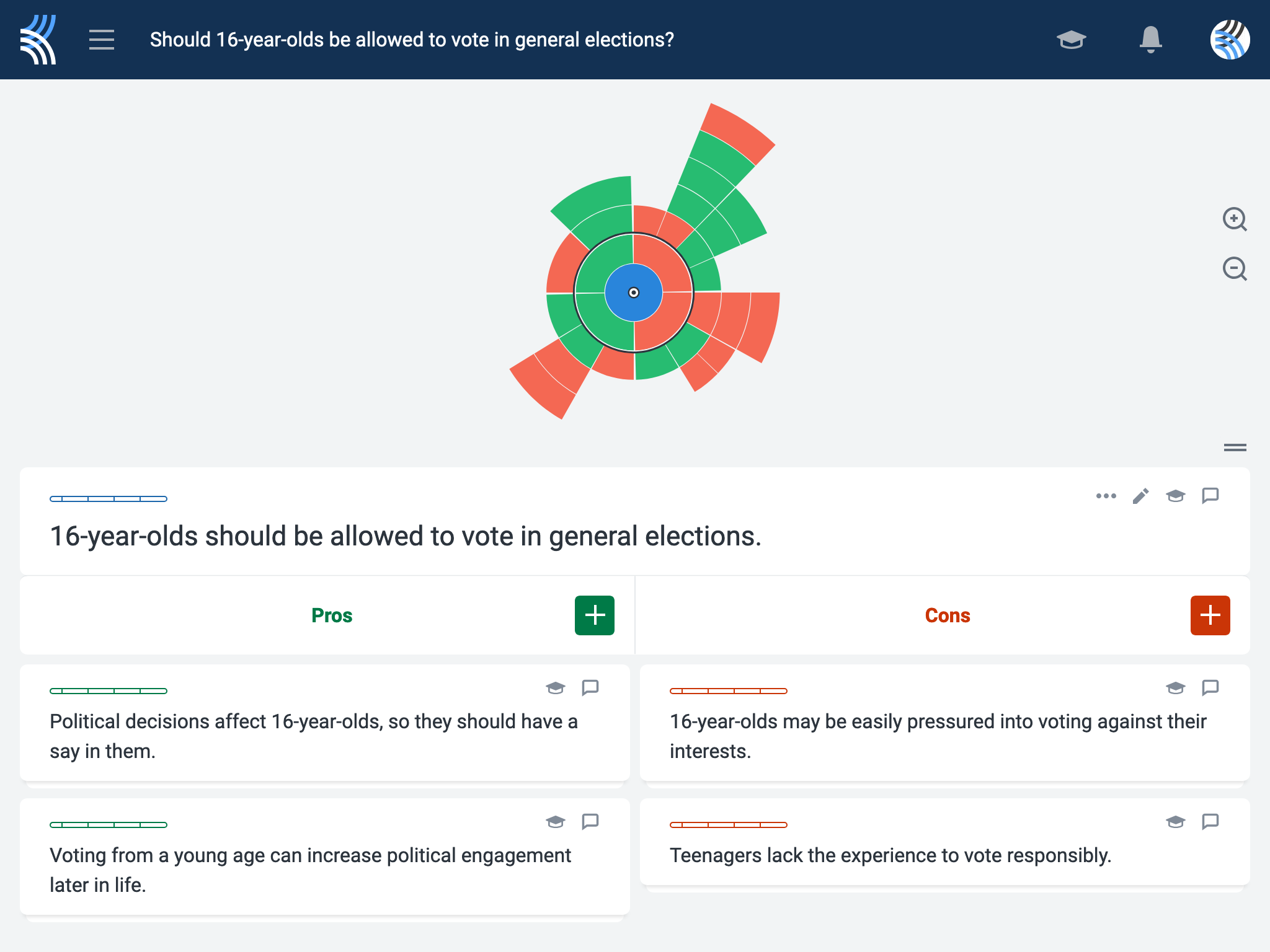This year was my first time teaching Theory of Knowledge (TOK) for the IB Diploma Programme, and like many educators new to the subject, I was both excited and slightly overwhelmed. TOK isn’t just a subject — it’s an ongoing dialogue about how we know what we know, and how knowledge shapes our understanding of the world.
I was eager to create meaningful discussions, but I knew I needed a tool that would help structure thinking while giving students the space to explore, question, and collaborate. That’s when I was introduced to Kialo and it truly transformed my classroom.
My experience using Kialo for TOK
I had the chance to be part of a pilot program with Kialo, and I can honestly say it became an invaluable part of my TOK toolkit.
For a subject built around arguments, perspectives, and analysis, Kialo’s format fits like a glove. It allowed students to visually map out claims and counterclaims, building layered discussions that went far beyond surface-level thinking.

Furthermore, the Kialo team was incredibly supportive throughout the process. Since I was navigating TOK for the first time, their guidance made a real difference. They provided me with ready-made slides for my TOK lessons, which were not only beautifully designed but also packed with useful links, examples, and scaffolding for both me and my students.
Improved student outcomes from using Kialo discussions
One of my favorite things about using Kialo was how it leveled the playing field for different types of learners. Some students who were quieter in class really came alive on Kialo. The structure gave them time to form and express their thoughts clearly, and the branching format helped them see how arguments develop.
Others enjoyed challenging peers’ claims or adding supporting evidence to bolster an argument. It encouraged collaborative, respectful critical thinking which is the heart of TOK.
The discussions we had after a Kialo activity were some of the most insightful and engaged conversations we had all term. Students referred back to arguments they’d seen online, cited sources, and debated ideas with real nuance.
What stood out to me most was how empowering Kialo was for both students and me. It gave them a space to challenge, defend, and reflect and it gave me a framework to guide them in doing so. The visual layout of claims and counterclaims also helped make abstract TOK concepts more accessible, and students loved seeing their ideas “come to life” in an organized, living map of thought.
I would highly recommend Kialo to any teacher, but especially to those teaching TOK. The platform fosters deep, reflective thinking and provides the kind of scaffolding that allows students to truly engage with ideas.
Using Kialo made my first year teaching TOK not only manageable, but honestly joyful. I’m excited to keep using it and to see where our debates take us next.


